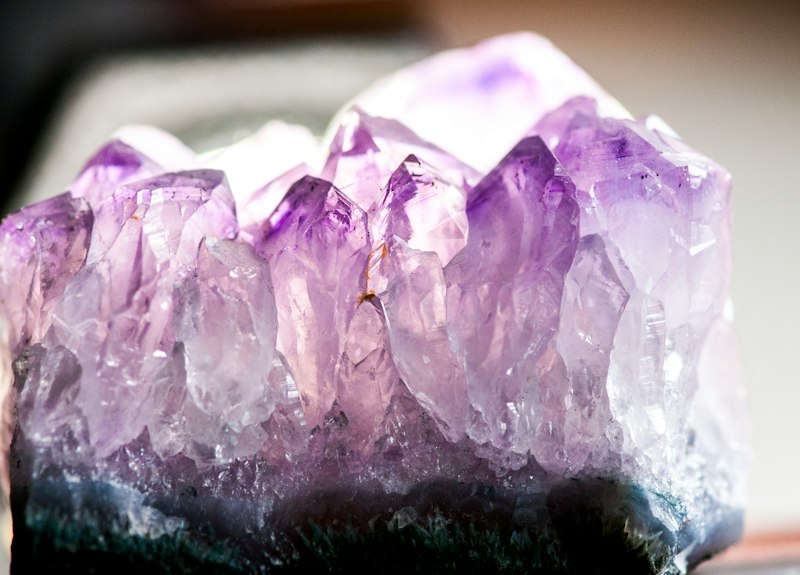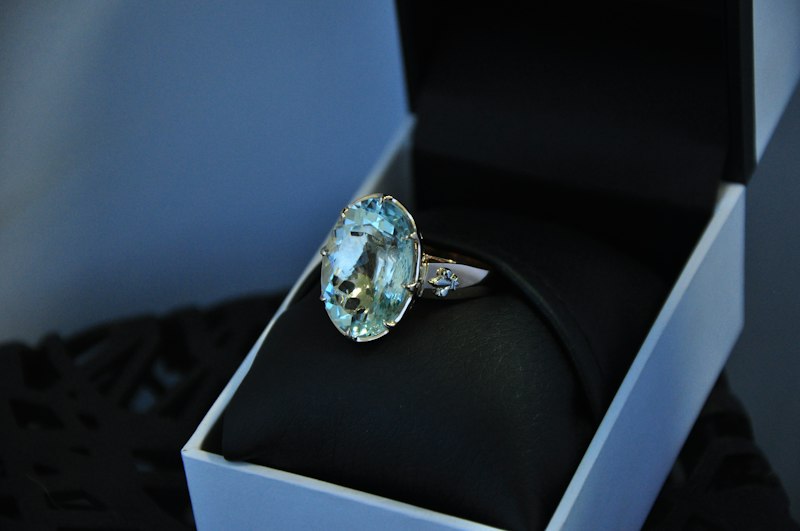Gemstone Legends: Myths and Tales from Ancient Greece
Gemstones have always captivated us with their exquisite beauty and mystical allure. Throughout history, these precious stones have been surrounded by fascinating stories and legends, none more enchanting than those from ancient Greece. In this article, we will delve into the captivating world of gemstone myths and tales from this ancient civilization.
One of the most renowned gemstones in Greek mythology is the amethyst. According to the ancient Greeks, this purple gem was believed to ward off intoxication. The mythological tale behind this belief involves the god Dionysus and a mortal woman named Amethystos. When Dionysus fell into a drunken rage, Amethystos sought the protection of the goddess Artemis, who transformed her into a pure white stone. Overwhelmed with remorse, Dionysus spilled wine over the stone, giving it its distinctive purple hue. This legend gave rise to the belief that wearing or carrying an amethyst could prevent drunkenness.
Another intriguing gemstone legend from ancient Greece revolves around the origin of pearls. The Greeks believed that pearls were formed from the tears of the gods. Legend has it that when Aphrodite, the goddess of love and beauty, was born from the sea foam, her tears of joy turned into pearls as they touched the water. This story bestowed pearls with a sense of purity and timeless elegance, making them highly prized throughout history.
The mesmerizing blue gemstone known as sapphire also holds a special place in Greek mythology. It was associated with Apollo, the god of the sun and light. The ancient Greeks believed that sapphires gave mortals access to divine wisdom and protected them from harm. It was said that the Oracle of Delphi, a sacred site where people sought guidance from the gods, was adorned with sapphire stones to enhance the spiritual connection between humans and the divine.
The Enigmatic Powers of Gemstones in Ancient Greek Mythology: Unveiling the Legends
Gemstones have always fascinated us with their dazzling colors and exquisite beauty. But did you know that in ancient Greek mythology, these precious stones were believed to possess enigmatic powers? Let’s embark on a journey to unravel the legends surrounding gemstones in ancient Greece.
In the realm of Greek mythology, gemstones held a significant place. They were not mere adornments; they were believed to embody supernatural qualities and connect mortals to the gods. Each gemstone had its own unique power, making it a potent symbol tied to various myths and legends.

Another gemstone with a captivating mythological story is the Moonstone. In ancient Greece, it was believed to be solidified moonlight. According to the legend, the goddess Selene, who personified the moon, fell in love with a mortal shepherd named Endymion. To preserve their eternal bond, Selene asked Zeus to grant Endymion eternal youth and immortality. As a symbol of their love, she bestowed him with the gift of moonlight encapsulated in a stone, which came to be known as the Moonstone. It was said to bring good fortune, enhance intuition, and deepen one’s connection with the lunar energy.
The Opal, known for its mesmerizing play of colors, was associated with the story of Prometheus. According to the myth, Prometheus stole fire from the gods and gave it to humanity, leading to their enlightenment. As punishment, Zeus condemned Prometheus to eternal suffering, chaining him to a rock. However, each time a drop of his blood fell on the stone beneath him, it turned into an Opal. This gemstone came to symbolize hope, creativity, and inspiration.
From Aphrodite’s Tears to Poseidon’s Treasure: Exploring the Mythical Origins of Gemstones
Did you know that gemstones have mythical origins that date back to ancient times? These precious stones possess a fascinating history as they were believed to be gifts from the gods themselves. Let’s embark on a captivating journey into the realm of mythology and explore the enchanting stories behind these timeless treasures.
One such mythological tale revolves around Aphrodite, the Greek goddess of love and beauty. Legend has it that when Aphrodite shed tears of sorrow and anguish for her beloved Adonis, her tears transformed into stunning gemstones as they touched the earth. These tears became known as pearls, symbolizing love, purity, and beauty.
Another intriguing story involves Poseidon, the Greek god of the sea. It is said that Poseidon possessed a magnificent treasure chest filled with gemstones. As he ruled over the oceans, he protected this treasure, guarding it fiercely against anyone who dared to challenge his dominion. This legend highlights the deep connection between gemstones and the vast depths of the sea.
Moving eastward, we come across the ancient Egyptians, who revered gemstones for their mystical properties. The Egyptians believed that certain gemstones held protective powers and bestowed them upon their wearers. For instance, the lapis lazuli was associated with the sky and believed to bring wisdom and spiritual enlightenment.
In Norse mythology, the rainbow was seen as a bridge connecting the mortal world to the realm of the gods. It was believed that the shimmering colors of gemstones represented the hues of this celestial bridge. Each gemstone was thought to hold a specific energy, aligning with different aspects of life.
These captivating tales highlight the significance of gemstones in ancient civilizations. They were not merely objects of adornment but carried profound symbolism and meaning. Gemstones were revered for their supposed magical and healing properties, and they played a crucial role in religious ceremonies and rituals.
Today, the allure of gemstones continues to captivate us. People still cherish these exquisite treasures for their beauty, rarity, and the sense of wonder they evoke. Whether it’s the deep blue of a sapphire, the fiery sparkle of a diamond, or the vibrant green of an emerald, gemstones continue to inspire awe and fascination, just as they did in ancient times.
As we delve deeper into the world of gemstones, we uncover more intriguing stories and legends that add depth and enchantment to these precious stones. From Aphrodite’s tears to Poseidon’s treasure, the mythical origins of gemstones remind us of the enduring power and allure of these timeless wonders.
Gemstone Mythology: The Role of Precious Stones in Ancient Greek Beliefs and Rituals
Have you ever wondered about the captivating world of gemstones and their significance in ancient Greek mythology? These dazzling treasures held a prominent place in the beliefs and rituals of the ancient Greeks, symbolizing power, protection, and divine connection. Let’s delve into their enchanting realm and explore the role of precious stones in ancient Greek culture.
In ancient Greece, gemstones were believed to possess supernatural powers and were associated with various gods and goddesses. One such gemstone was the lustrous amethyst, which the Greeks believed protected against intoxication and enabled them to maintain a clear mind during celebrations and feasts. They viewed it as a symbol of sobriety and spiritual wisdom.
Another beloved gemstone among the ancient Greeks was the radiant emerald. This verdant gem was closely linked to Aphrodite, the goddess of love and beauty. It represented fertility and was thought to bring harmony and everlasting love to relationships. The Greeks adorned themselves with emeralds to invoke the blessings of Aphrodite and enhance their allure.
Furthermore, the mesmerizing ruby held great significance in Greek mythology. Associated with the god of war, Ares, the ruby embodied passion, strength, and courage. Warriors would wear rubies on their armor, believing they provided protection in battle and invincibility against their enemies. The intense red color of the ruby symbolized blood and vitality, reinforcing its association with war and heroism.
Additionally, the opulent sapphire possessed celestial attributes in ancient Greek culture. Linked to Apollo, the god of the sun, sapphires were believed to offer clarity, enlightenment, and divine favor. The beautiful blue hues of this gemstone evoked visions of the heavens and were seen as a gateway to spiritual realms. The Greeks cherished sapphires as a conduit for receiving wisdom from the gods.
As we embark on this journey through ancient Greek beliefs and rituals, we discover the deep reverence and awe these remarkable gemstones inspired. From the protective amethyst to the passionate ruby, each precious stone held a unique place in the hearts and minds of the ancient Greeks. These captivating gems not only adorned their bodies but also served as powerful symbols of their connection with the divine.
We invite you to revel in the mystical allure of gemstone mythology and delve deeper into the rich tapestry of ancient Greek culture. Immerse yourself in the stories and legends woven around these cherished treasures, and unlock the secrets they hold. Let the radiant world of gemstone mythology transport you to a bygone era where gods and mortals intermingled, and the power of precious stones reigned supreme.
Legendary Gemstones in Ancient Greece: Stories of Power, Protection, and Transformation
Introduction:
In the ancient world, gemstones were more than just objects of beauty; they possessed mystical qualities that held great significance. Ancient Greece, known for its rich mythology and legends, also had its share of extraordinary gemstones that played a pivotal role in shaping the stories of power, protection, and transformation. Let’s delve into the realm of legendary gemstones from ancient Greece and discover their captivating tales.
Emeralds: The Lush Green of Divine Love
Among the revered gemstones of ancient Greece were emeralds. These lush green gems were associated with the goddess Venus, symbolizing love, fertility, and rebirth. Legend has it that emeralds were the tears of joy shed by Venus when she witnessed humanity’s profound acts of love. By wearing emerald jewelry, the wearer was believed to attract love, abundance, and eternal youthfulness.

Sapphires, with their deep blue hues, held immense significance in ancient Greece. They were considered sacred gems that acted as portals to the divine realms. The Greeks believed that sapphires could channel wisdom, truth, and spiritual enlightenment. It was said that these precious stones bestowed clarity of thought upon those who possessed them, enabling them to make wise decisions and find inner peace.
Amethysts: Guardians of Sobriety and Clarity
The mesmerizing purple amethysts held a special place in ancient Greek culture. It was believed that wearing or carrying an amethyst protected one from intoxication and ensured a clear mind. The Greeks associated this gemstone with the god Dionysus, known as the god of wine. Amethysts were seen as guardians against the allure of excessive indulgence and helped individuals maintain sobriety and mental clarity.
Garnets: Symbols of Passion and Strength
In the realm of ancient Greece, garnets were highly regarded for their fiery red brilliance. These gemstones were associated with passion, love, and strength. It was believed that wearing garnet jewelry ignited one’s inner fire, stimulating creativity, and empowering individuals to pursue their ambitions with unwavering determination. Garnets symbolized vitality, vigor, and the unyielding spirit of warriors.



